All about fluorite
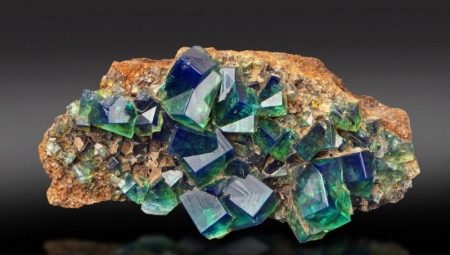
There is a surprisingly beautiful, but at the same time deceiving mineral in nature - it is called fluorite. All people who have encountered him are divided into two camps - some simply idolize him, and the second are afraid. Let us dwell in more detail on the features of the stone, the magical and medicinal properties that are attributed to it.
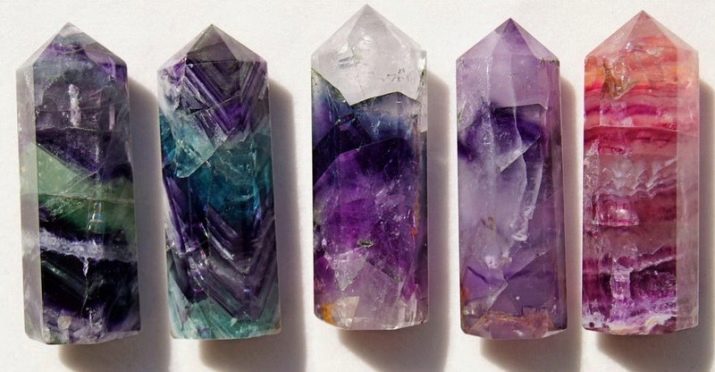
A bit of history
Evidence that fluorite was used in ancient times has been found during archaeological excavations. Even in Ancient Greece, people knew and used this stone. In those days, its value was comparable to the price of gold. It was used to make dishes for the richest citizens. She was prized for looking like she was lit from the inside.
In ancient Rome, utensils made of fluorite were valued even more expensive than gold; it was from this stone that the famous murine vases were made, which were mentioned by Pliny in describing the most famous minerals of antiquity. To our great regret, not a single such vase has survived to our times, even in the form of fragments.
In Rome, fluorite was supplied from Parthia, one of the most powerful states of that time, occupying a vast area from the Caspian Sea to the Persian Gulf. The cost of a murine vase reached 100 thousand gold dinars - for comparison, for such an amount it was possible to build a luxurious palace or maintain a whole legion of soldiers for a long time.
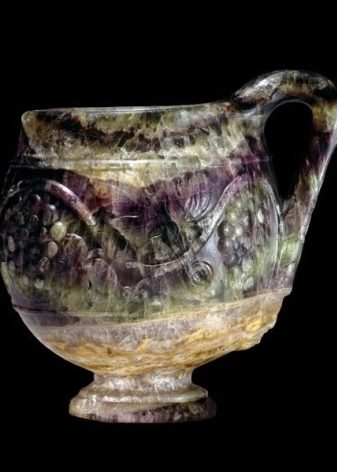

In India, this unusual crystal was an object of worship, it was revered as a sacred flower and believed that it helps to establish contact with the gods. In those days, the stone was called murine, much later in Germany it was given its modern name, which in translation means "flow".In some countries, fluorite is known as fluorspar, South African emerald, and ore flower.
A new round of popularity of the stone is associated with the Renaissance - in those years it shone in almost every rich house, but this did not last long. The fact is that the poor began to use the stone - thanks to its wide color palette, substitutes for precious stones began to be produced from the crystal.
For the first time, the properties of this iridescent mineral were described by the German scientist Georgy Agricola, who gained worldwide fame as the founder of the theory of stones.
It was he who first drew attention to the ability of the mineral to melt and gave it a name - this happened in the second half of the 16th century.


Specifications
If you try to characterize fluorite, you can define it as a translucent or completely transparent crystal with tints, patterns and a unique color palette.
The crystal is calcium fluoride, the chemical formula of the substance is CaF2. The main components of fluorite are Calcium and Fluorum, but the fact is that in such a pure form crystals are practically not found in nature, you can count on the fingers of those lucky ones who happened to hold the purest fluorspar in their hands. Typically, the structure includes various impurities. The mineral belongs to the class of halides and has quite interesting chemical properties:
- has the ability to dissolve in hydrochloric acid;
- glows in the dark;
- can react to direct UV radiation.

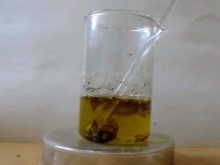
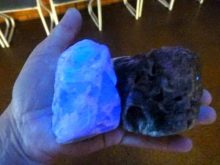
Fluorite melts at temperatures in excess of 1300 degrees, which also distinguishes it from real gemstones.
Depending on the amount of extraneous components, the gem can have a wide variety of shades - this is one of the most valuable qualities of this crystal. There are several main varieties of fluorspar.
- "Smelly" spar - the stone is a radioactive fluorite of black-violet color. This unusual name is explained by the fact that if this mineral is sharply hit on a hard surface, the fluorine contained in its composition begins to react with oxygen, which leads to the release of an unpleasant odor.
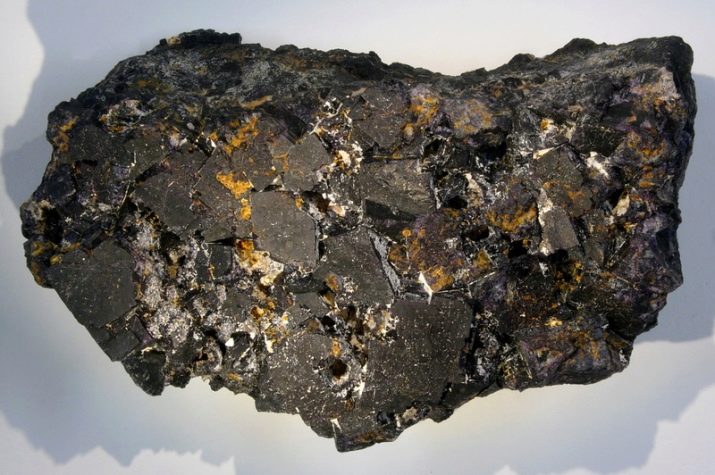
- Ratovkit - a lilac mineral, sometimes it can have a pink or purple hue.
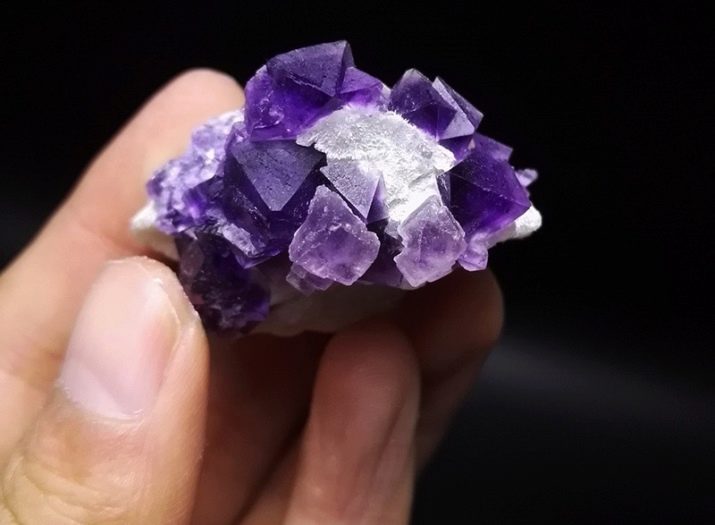
- Blue john - a rather exotic two-color crystal, as a rule, it is white with blue stripes, but it can be yellow with purple veins. In previous years, there was a large deposit of such stones, but over time it completely dried up, so the "blue john" is very expensive.

- Chlorophan - otherwise fluorite green. This stone is able to change its shade depending on the weather - the warmer it is in the yard, the more saturated and bright its color becomes.
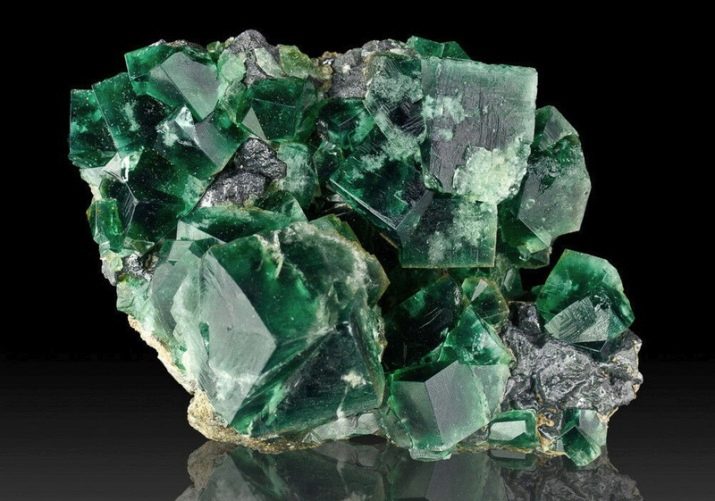
- Yttrofluorite - this stone has a wide range of shades from yellow to brown.
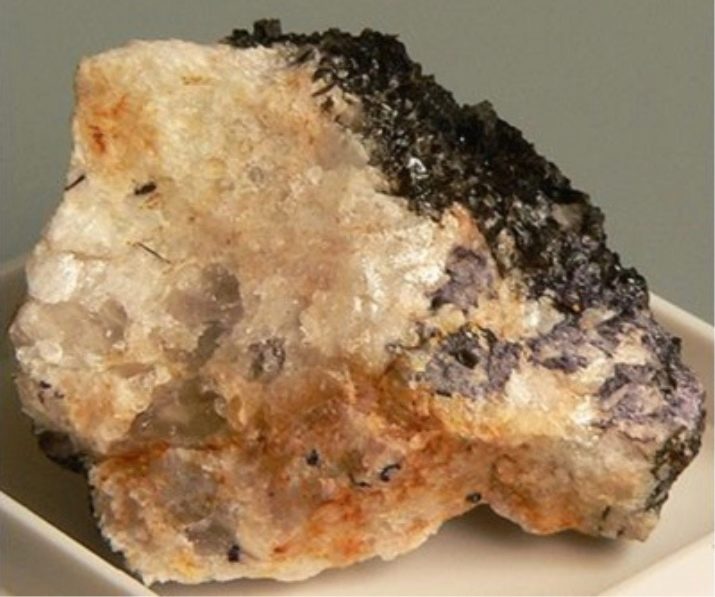
The most expensive are colorless and transparent crystals, they are also called "optical". Their cost is quite comparable to precious stones.
Interesting patterns and uneven color give the stones a special showiness, which is explained by the presence of uranium, strontium, samarium, iron and rare earth metals in the composition of the mineral. Due to the property of fluorescence under direct rays, the stone begins to emit a violet glow, and when heated strongly, it glows.

Place of Birth
Fluorite is quite common in nature. In fact, it is a common compound of calcium and fluoride, so it is not difficult to find it. But recognizing a stone is a more difficult task, due to its wide color palette it is often confused with other types of minerals.
People have been mining fluorspar since time immemorial. There are many deposits in the world that are already completely depleted today. It should be noted that in some of them truly unique samples were previously found.
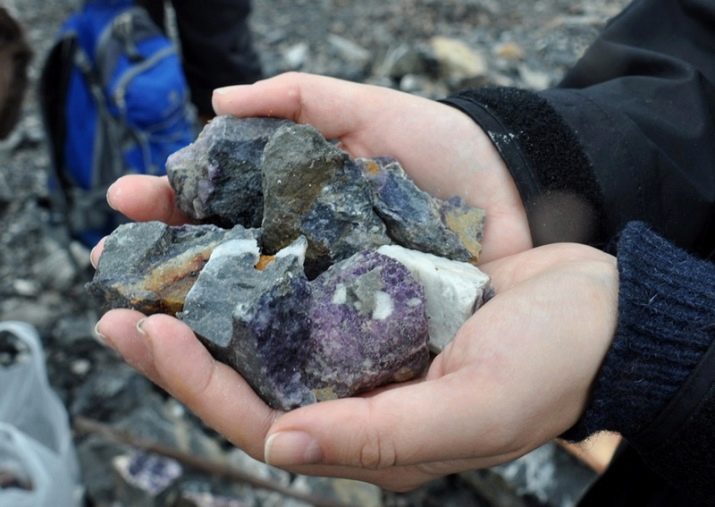
For example, a mine in Devonshire was rich in Blue John fluorite with vibrant blue-violet patterns. Nowadays, such stones are not found anywhere else, so their value has increased many times over.
Deposits in Russia:
- Primorskoe:
- Buryat:
- Transbaikal;
- Suran.
South Africa, Italy, the United States, as well as Spain and Norway are among the top ten countries in which feldspar is mined. Tajikistan closes the list - crystals can be found here in almost any region, except the southwestern one. Also, the mineral is mined in Mongolia, China, Kazakhstan, England, Switzerland and Namibia.
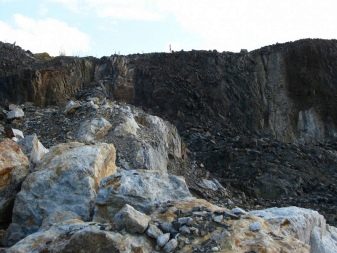
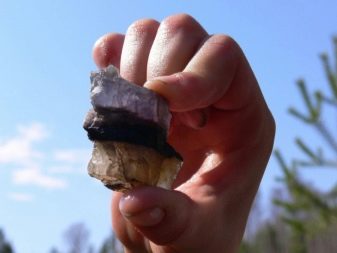
Some shades of stone can be found in very specific areas of our globe. For example, purple and colorless minerals are found only in America, while blue ones are found in Brazil.
Healing and magical properties
There are many legends and legends about all kinds of useful properties of a shimmering crystal and its significance for humans. This stone has not spared one of the popular currents of alternative medicine - lithotherapy, which is in great demand among people suffering from diseases of muscles, joints and bones. Fluorite ball massage is one of the most common services in many medical centers and clinics.... With the help of these procedures, the general condition of a person is significantly improved, muscles are toned and strengthened.
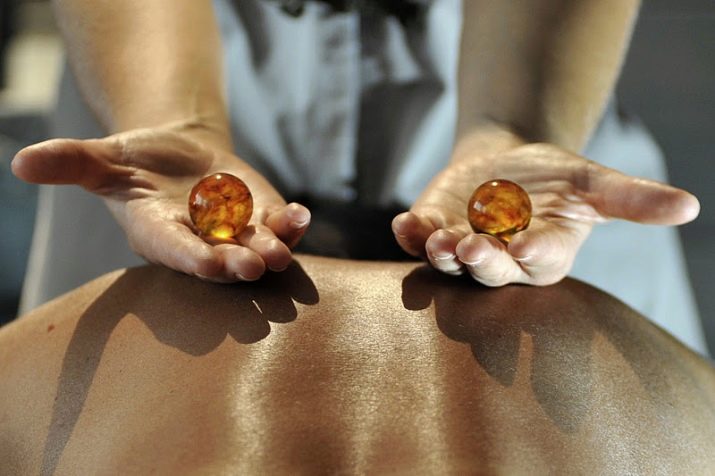
Fluorspar is also used for facial massage. Such procedures have a pronounced rejuvenating effect, and in addition, they reduce the symptoms of meteorological dependence, people get rid of migraines, their emotional background improves and insomnia passes. These amazing properties of the crystal were actively used by our distant ancestors - they often wore all kinds of jewelry with fluorite, claiming that they normalize the work of the heart and relieve headaches. However, we draw attention to the fact that only constant wearing of fluorite, and necessarily untreated, helps to get rid of serious health problems.... If the pathology is chronic, then it makes sense to purchase crystal beads or a pendant.
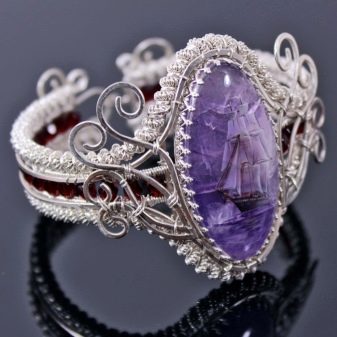
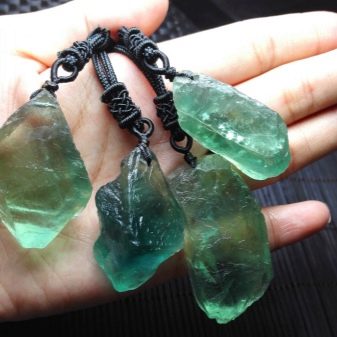
It is believed that the stone has pronounced magical properties. In ancient times, people believed that fluorite was of divine origin and was sent to earth by the gods in order to give them happiness and prosperity.
In the Middle Ages, fluorite was used by alchemists and sorcerers - with its help they lured clients to themselves and received considerable profit. The fact is that in the dark it glows, so many were simply afraid to death of him and at the same time admired, and sorcerers took full advantage of this to gain the glory of the strongest magicians... This stone was used to make talismans, amulets and special luminous balls for fortune-telling; they were widely used during spiritualistic seances and other magical rituals.
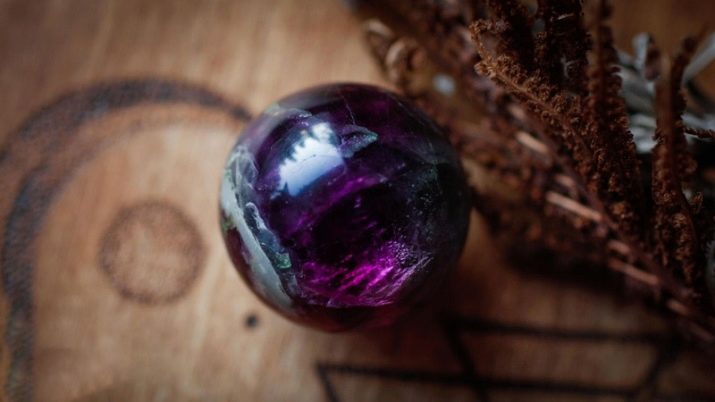
In ancient India, the priests argued that fluorite leads to the opening of the "third eye" - that is, the ability to clairvoyance. According to the teachings of the sages, it was this stone that helped to comprehend the most difficult teachings. People sincerely believed that fluorite could radically change the life of any person. With this he attracted and at the same time frightened.
The fame of the magical properties of fluorite eventually reached European countries, where for a long time it was considered the devil's stone. Particular fear was caused by those varieties of crystal stone, which, upon impact, began to exude an unpleasant odor. At this time, the crystal began to be used in carrying out black masses and rituals.

Of course, today many seemingly mysterious properties of fluorite have a very real scientific basis, but this does not diminish its importance among people who are fond of mysticism and extrasensory perception.... The stone is very popular in a wide variety of cultures, among different peoples and strata of the population.
Many yogis these days wear fluorite bracelets and beads, believing that this opens up a channel for them to communicate with higher powers. It is believed that its rays reveal the violet spectrum of a person's aura, bringing calm, balance and wisdom into his life.
Many people believe that the stone contributes to the development of intuition, therefore, almost all people who consider themselves clairvoyants carry fluorite with them or keep it in their home.

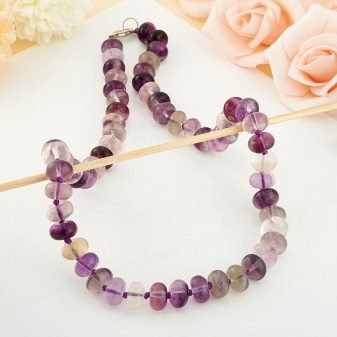
The peculiarity of this stone is that it suits almost all signs of the zodiac - just some people should wear it a little less often, while others, on the contrary, as often as possible.
The unique properties of the stone determine its use in a wide variety of fields, although, contrary to expectations, its quotation is low in the art of jewelry. Despite its beauty, it has a significant drawback - this mineral is fragile, so it is almost impossible to use it to create complex jewelry. Nevertheless, jewelers often imitate precious and semi-precious stones with them - ruby, sapphire, diamonds, aquamarine and emerald. Smooth oval or flattened minerals are most often used in the creation of jewelry. The most beautiful jewelry is considered to be made of untreated fluorite.
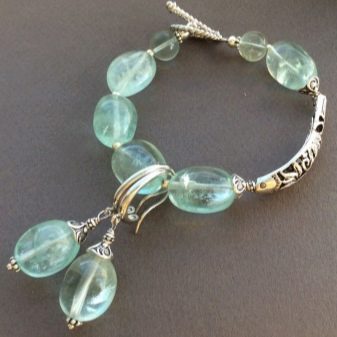

This spar is in demand in the manufacture of optical lenses for digital cameras and other high-precision devices, since it is much more transparent than plain glass.
When fluorite is combined with sulfuric acid, hydrofluoric acid is obtained. It is widely demanded in the aluminum industry. The stone is used in steel production, as well as in non-ferrous metallurgy. It has found its use for etching glass, as well as copper and some alloys.
Despite the particular fragility, polymers are made of the mineral, which are called photographic plates - these are durable materials that can withstand exposure to high temperatures.
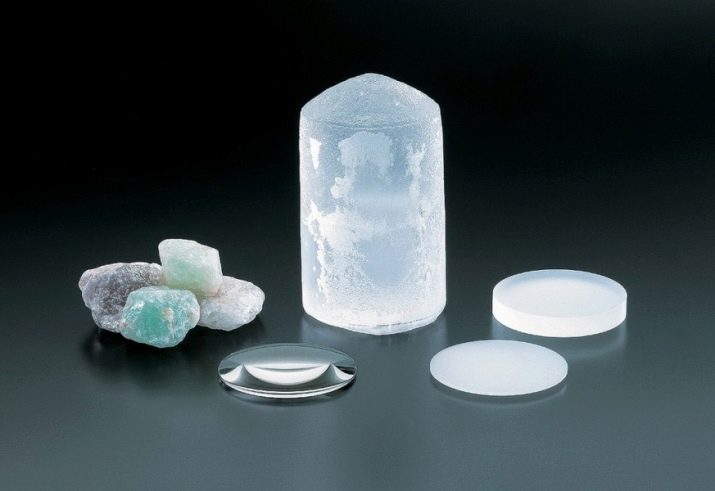
Who is it suitable for?
As we already mentioned, fluorite can be worn by representatives of all zodiac signs, but it has the most beneficial effect on Pisces, Capricorns, Libra, Gemini and Aquarius.
The union of fluorite with Gemini can be called ideal - it provides its owner with its protection, helps to find harmony, to achieve the set goal. Aries wearing this mineral become more balanced, judicious and calm. For Taurus, fluorite creates favorable conditions for raising the career ladder and improving material well-being. Cancers under the influence of the stone become softer and more tolerant, among the representatives of this sign the level of aggressiveness is significantly reduced.
Leo also becomes much calmer, and Virgo gains a long-awaited understanding with the people around her. For Libra, the stone has always been considered a protector from unkind people and envious people. When communicating with the crystal, Scorpios gain self-confidence, and Capricorn begins to better formulate thoughts and defend their own beliefs. Aquarians, under the influence of fluorite, learn to overcome life's troubles, and Pisces gain clarity about the direction of personal self-realization.
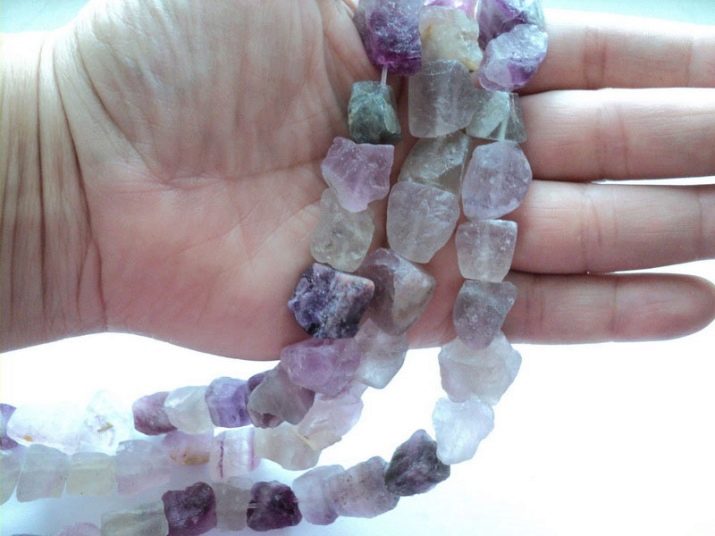
Perhaps the only sign that should minimize its contact with fluorite is Sagittarius; if worn constantly, it can bring him a series of failures and troubles.
How to care?
It is believed that the stone fully reveals its unique properties only to those people who are positive by nature, do not wish harm to others and try to do good. Legend has it that this stone does not live among evil and envious people, no matter how they look after it.
Fluorite must be stored separately from other stones, preferably in a soft box to avoid chips and scratches on its surface.

Crystals of this unusual stone are often used in meditation and other energy practices.It is believed that it is able to absorb negative energy, therefore it is used to cleanse the chakras and aura. In addition, it is noted that fluorite is able to cleanse the space around itself even from electromagnetic radiation, so it is recommended to keep the stone near computers and laptops. He is able to absorb the entire spectrum of emotional and physical negativity, and therefore needs frequent cleaning. Any dirt can be cleaned with plain water - you just need to rinse the stone and wipe it dry with a soft cloth. The use of chemical cleaners, especially abrasive ones, is not permitted.
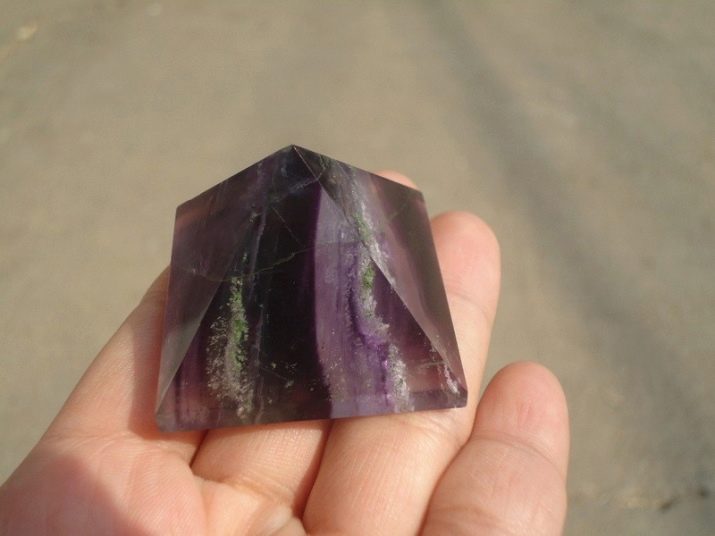
If possible, try to avoid temperature fluctuations - the fragile structure of the stone may not withstand such fluctuations.
Despite the fact that fluorite is often used to imitate precious stones, it is often counterfeited. To identify a fake, you need to look at the mineral under ultraviolet rays - a real crystal immediately begins to glow. This crystal is heavier than glass, in addition, its surface is usually covered with all kinds of scratches and mini-cracks.
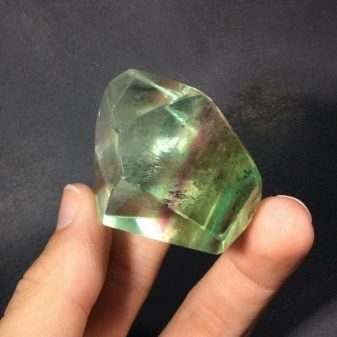
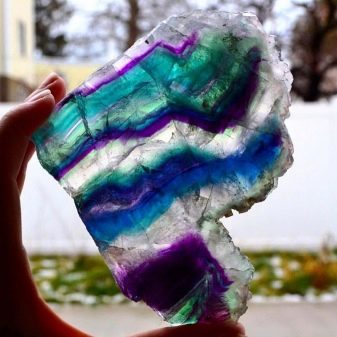
Beautiful examples
Considering all the magical properties attributed to fluorite, it is not surprising that it is often used to make amulets and talismans. It is generally accepted that such a product will faithfully protect its owner from negative external influences, will help keep his emotions and thoughts under control. That is why, first of all, women are advised to wear it - the stone helps them avoid hysterics, improve relationships with others and find peace in the family.

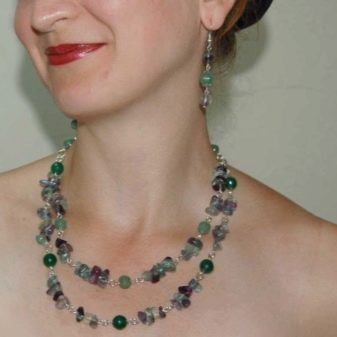
When using this unusual stone as a talisman, it is important to consider where exactly it should be worn. For example, if it is placed on the hand in the form of a ring or bracelet, this improves the intellectual status and analytical abilities of a person, and if the amulet is worn in the form of a pendant, then its owner will be successful in his personal life.


Nowadays, figurines are made from fluorite, but jewelry is extremely rarely made from it. Most often it is used to create jewelry; for this, it is polished and shaped without sharp edges. Earrings and brooches are made from such stones, which, no doubt, will be able to decorate any representative of the fair sex.
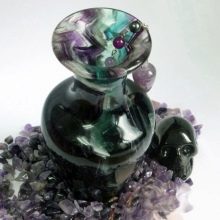
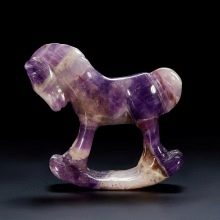
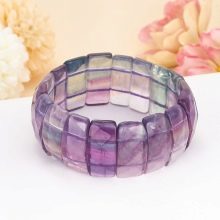
The cost of processed fluorite often reaches 10 thousand rubles (according to 2017 data). The price directly depends on the uniqueness of the stone, its color and the presence of additional inclusions.
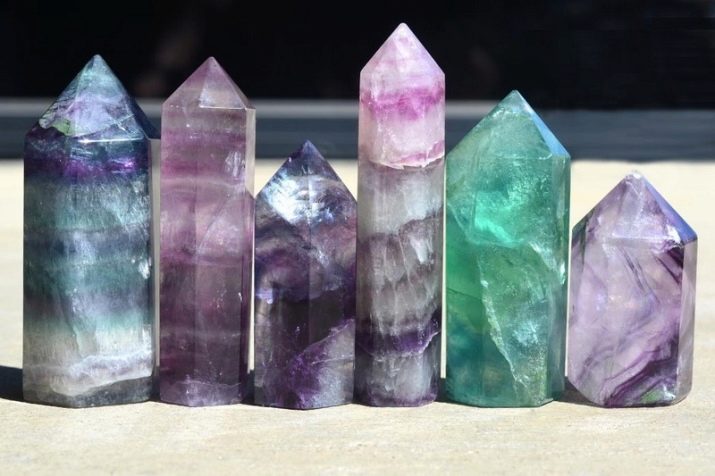
The cost of polished stones usually varies from 200 to 700 rubles, for decorative items they take from 300 to 3000 rubles, talismans and jewelry made from crumbs are estimated at 300 to 4000 rubles.
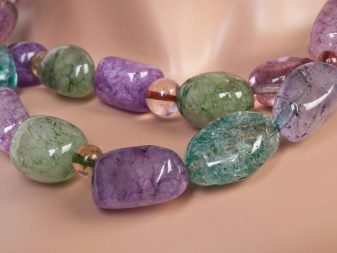

The most expensive are unique jewelry and exclusive decor items.
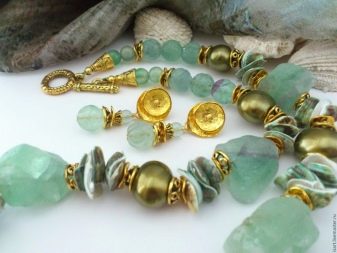

For information on the properties of fluorite, see the next video.








